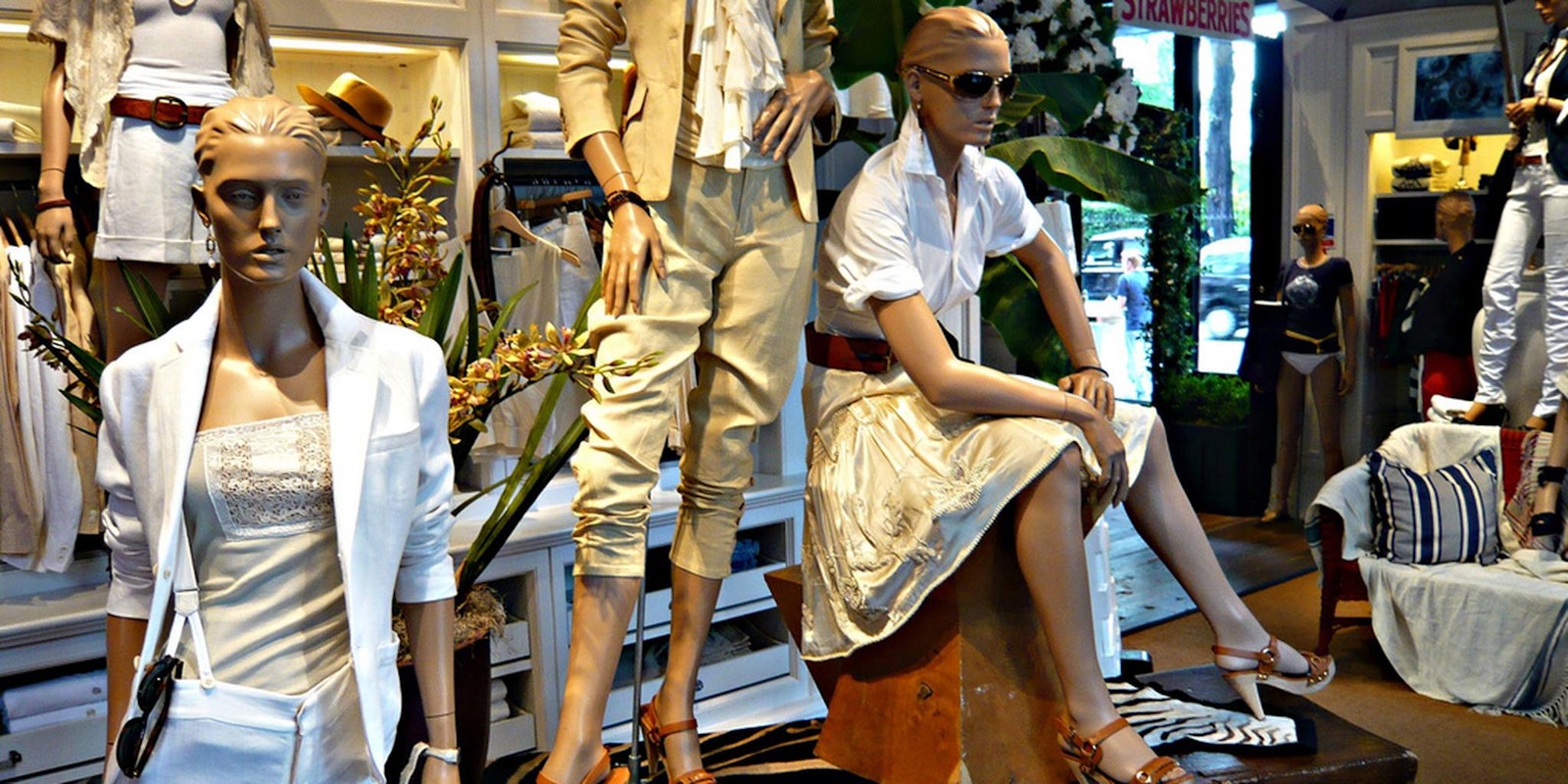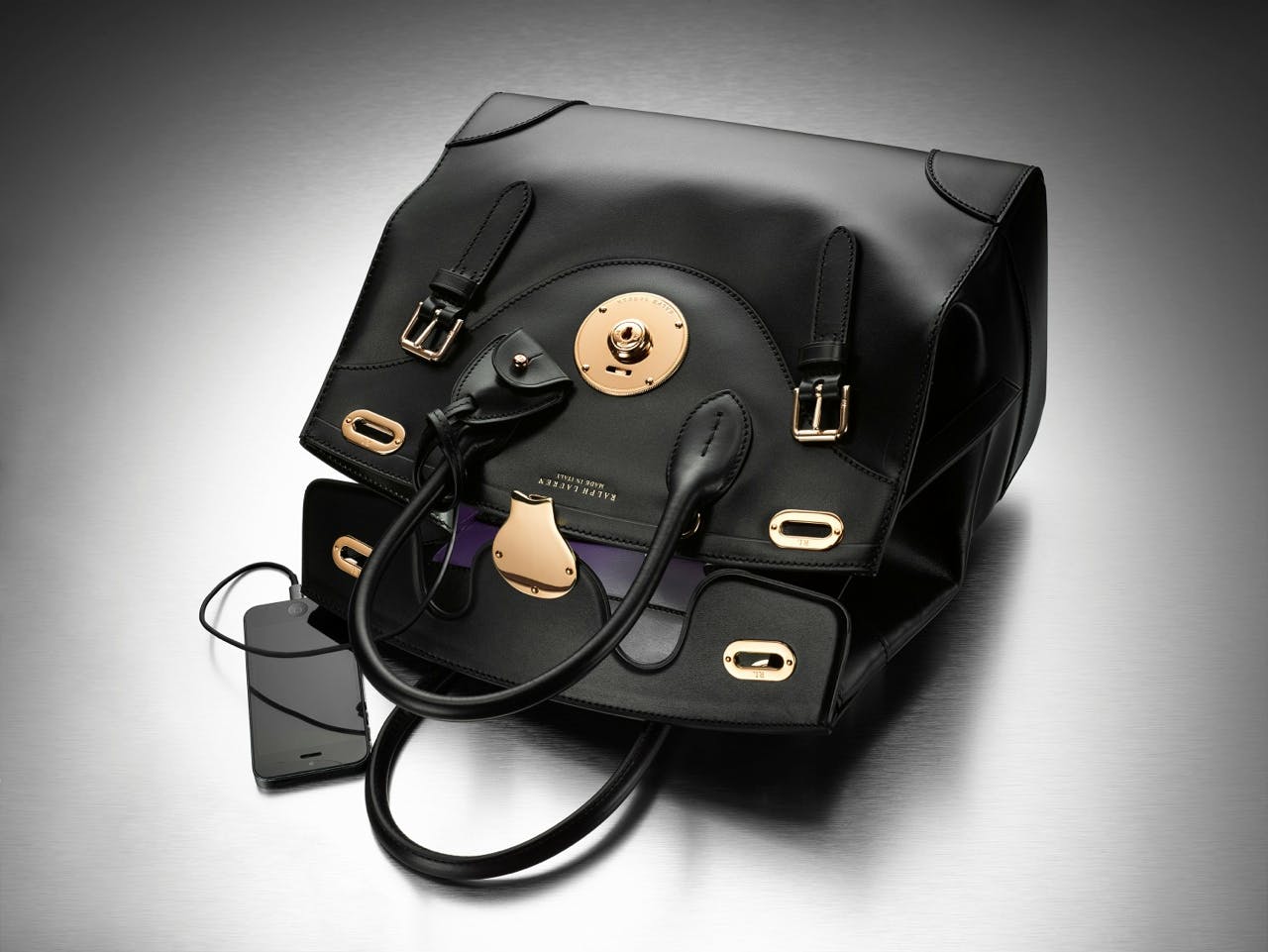A quick message for wearable-makers: A “smart” product isn’t cool unless it does something you can’t live without.
Ralph Lauren should be listening. The retail company’s latest attempt to marry technology and fashion comes in its new Ricky bag, in which designers have placed a light and a smartphone charger. And just like an empty purse, the company’s new product falls flat.
“Lots of people just see us as timeless and classic,” David Lauren, executive vice president for advertising, marketing and corporate communications at Ralph Lauren told the New York Times, “But we need to define modernity, too, and there’s nothing like technology to make that statement.”
The idea has potential—many people would want their purse or satchel to have capabilities that could keep them connected while running errands or in meetings throughout the day. But by simply adding a light and charging battery to a purse doesn’t make it any smarter, or more appealing to people who truly love and want technology they can wear.
Portable chargers already exist, and most of them are small enough to fit in a variety of different handbags. The Ricky bag’s own battery must be replaced after four to five months of continuous light use, and since it’s sewn directly into the bag, it must be taken to the store to be replaced. It’s not a very persuasive selling point.
Having a light might be beneficial for those moments when keys are lost in the depths of leather and polyester, as it lights up when you open an inside panel in the purse. But there are a number of products that already exist and can be used in different bags, not just one.
Perhaps the biggest deterrent for buying this bag is it’s hefty price point. The 33-inch tech-infused Ricky bag will set consumers back $5,000, much more than the ordinary, disconnected $3,500 Ricky bags will cost. Considering you can buy an external portable battery for $80 and a purse light for $30, the smart version is a tad overpriced.
This isn’t Ralph Lauren’s first foray into the wearable market. Earlier this year, the company debuted smart shirts that track biometric data like heart rate and exercise information and relays it to a smartphone app.
The difference is that these shirts make sense—they provide you with a hands-free way to monitor your health. The Ricky bag, however, is seriously lacking. Handbags could be the next frontier of wearables, if only companies could get it right.
Ralph Lauren could turn its bags into Wi-Fi hotspots, or include Bluetooth so the handles vibrate when the wearer gets a text or phone call. Or even a pedometer for tracking the flights of stairs we go up and down to work each day, or a way to remind us when we’ve left our cell phone at home or in the office.
There’s still a gap in wearables looking to be filled—products that both look good and give consumers something they need and would use daily. But in order to convince shoppers to fork over hundreds or thousands for a product, retailers will have to create something that we can’t find anywhere else. And Ralph Lauren hasn’t done that quite yet.
Photo by Herry Lawford/Flickr (CC BY 2.0)



